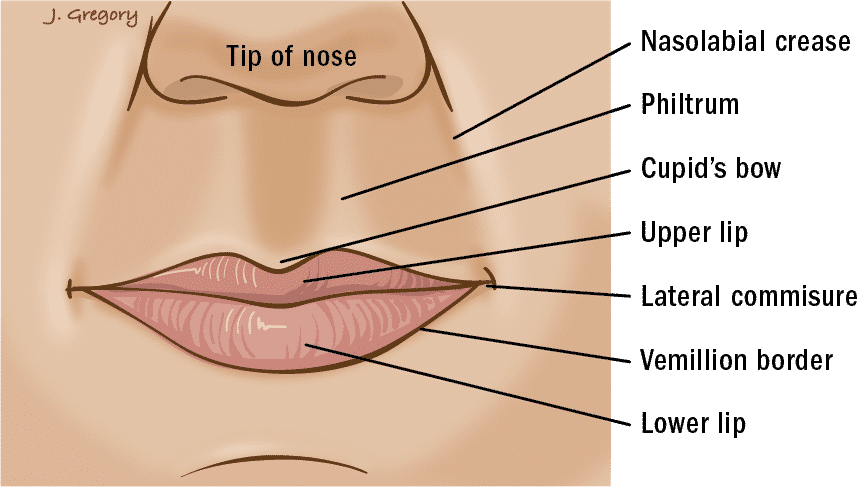The Anatomy of the Lips
In order to begin to understand lip cancer, it is important to gain some background knowledge on the surrounding anatomy. The upper and lower lips serve as the gateway to the rest of the oral cavity. They are responsible for protecting the mouth and for holding food and drinks inside the mouth as a person chews and swallows. They also play a role in articulation, which is how a person forms clear sounds when they speak.

The Upper & Lower Lips
Technically, the upper lip starts just below the nose, while the lower lip starts at the depression just above the chin (called the mental crease). However, these regions contain both normal skin and pink skin, called the mucosal lips, which is what most people consider to be their lips. The mucosal lips start at the vermillion border, which is the intersection between the normal skin and the pink lip skin. They end at the point where the upper and lower lips touch when the mouth is closed. At this point, the mucosal lips transition to what is called the labial mucosa inside the mouth, which extends to the gums. The lateral commissure is the corner of the lips where the upper and lower mucosal lips come together.
The mucosal lips are made up of a type of tissue called squamous epithelium. Underneath this layer of tissue there are many minor salivary glands, as well as a layer of muscle.
The Relationship of Lip Cancer to Skin Cancer
Cancers in the lip region that arise from normal skin are grouped under skin cancers, while cancers that arise from the pink part of the lips are grouped under oral cavity cancers and will be discussed here. These cancers can arise anywhere along the mucosal lips, although cancers at the commissure are very rare.













